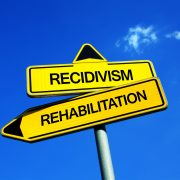The institutional and cultural guidelines today for personal and family income tell us to take a job. The government publishes jobs data as a key indicator of the health of the economy. They publish the inverse set of data – unemployment statistics – for the opposite reason, an indicator of the unhealthy state of the economy. We are subject to reports and commentary on job creation and job destruction. There are blue-collar jobs and white-collar jobs, and there are “non-jobs” in the so-called gig economy (which is institutionally and culturally and frowned upon because it does not provide “stable” or “reliable” jobs, and doesn’t offer “job benefits”, thus exposing gig workers to some set of vagaries or injustices).
Jobs are a product of the industrial revolution. Serfs and peasants in the feudal economy didn’t have jobs. They were “tied to the land” as the history books tell us, either farming for the aristocratic landholders or scrambling for subsistence on land they didn’t own. As soon as factories appeared, so did “jobs”. Somehow, the term tended towards tasks that were “low” and menial.
A job is something the worker takes. It is given to him or her as a gift, a privilege, an act of generosity of an employer. We should be grateful for our jobs, and try hard to keep them, not lose them.
Concepts such as the minimum wage level for a job are intricately entangled in the hierarchical job-granting schema. The power center determines for you how much value you are deemed to generate.
Our entire lives are constructed around jobs. We consume education in order to become qualified for a job. We plan to fund our pension income from the proceeds of a job. We access the healthcare system via the benefits provided to us as a result of our job. We call a job held for a long time a career. Jobs overwhelm lives.
What if the institutional and cultural guidelines were different? What if the life-system we are plugged into from birth was not so dominated by the concept of jobs, of working for corporate employers?
Reframing how we think of the structure of the economy.
The picture we paint of the economy when we talk in terms of firms creating jobs for employees to take is hierarchical. We look up to “Big Business” and rank them on their number of employees. These companies make up the DJIA and S&P 500 indexes that we talk about every day. Smaller companies don’t get a mention. They sit lower down the hierarchy.
If we reframe this picture to think about a network rather than a hierarchy, we can assign a more equally important role to every node and every connection. We can see productive activity distributed across the network, with opportunities throughout. The economy is a collaborative system of production in which there are innumerable choices for each of us to decide how to contribute.
The gradual abandonment of hierarchy in organization is, in fact, quite well advanced in the digital age. Our thinking about jobs and employment needs to catch up.
A life of production versus a life of earning.
Our reward for working at a job is often expressed as earnings. Not only earning dollars, but earning a good living, earning our keep, earning a promotion. We earn by keeping in line, following orders, performing tasks. In the collaborative economic network, we can be producers rather than earners. We focus on how much our productivity in generating output to nearby nodes – team-mates, partners, customers, the next stage of the value chain – so that our connections are strong, and we are evaluated as a strong and reliable link.
Our time and effort is focused on how to be more productive, rather than how to fit in to an administrative harness. Our creativity is liberated and we evaluate our work-life for its stimulation rather than its weekly earnings.
Division of labor and division of knowledge.
Economists have identified a phenomenon they call division of labor as one of the great secret sources of job productivity. The more narrowly each individual worker specializes, the better the combined organizational outcome. This thinking has been pervasive since Adam Smith’s picture of the pin factory in The Wealth Of Nations.
‘One man draws out the wire, another straights it, a third cuts it, a fourth points it, a fifth grinds it at the top for receiving the head; to make the head requires two or three distinct operations; to put it on, is a peculiar business, to whiten the pins is another; it is even a trade by itself to put them into the paper; and the important business of making a pin is, in this manner, divided into about eighteen distinct operations, which, in some manufactories, are all performed by distinct hands’.
The division of labor reduces us all to pin head grinders. The goal is to make each of us so specialized in our function that we can only operate in a hierarchy, we can only perform one narrow task, and we are easily replaced by another individual who can be quickly trained in repetitive pin head grinding.
There’s another alternative, and that might be called division of knowledge. Knowledge is the source of economic production, increasingly valuable when we add to it, whereas labor is a cost, to be reduced and, if possible, eliminated. Every individual has unique knowledge; it’s experiential, subjective, an act of cognition. The most valuable knowledge is tacit, not subject to analysis and not easily shared, guiding individual activity in unique ways.
Individuals can collect, curate, polish and adapt their own knowledge to make more of a contribution to collaborative economic production. They can aim to be best at something in their network based on unique, individual tacit knowledge. It might be welding metals together or writing code or detailing cars or growing vegetables or setting prices for hard-to-price items. They can easily find out what knowledge is required and valued in nearby parts of their network, and adapt appropriately, exhibiting their knowledge for the most eager buyers.
Division of knowledge is more empowering than division of labor.
Measure your own performance.
One of the ways that the job-granting hierarchy exerts control over the job-taker is performance reviews. The employer makes rules about what constitutes desirable performance, and designs ways to measure how well the rules are internalized by employees. Those job-takers who conform best are those who are rewarded with pay increases, promotions and recognition. Performance attributes like “works well with others on teams” and “achieves departmental goals” are designed for the benefit of the hierarchy, and not as guides to self-realization for individuals.
Many of the corporate performance programs require the individual employee to undergo a personality evaluation, often using industrialized frameworks such as the Myers-Briggs Typology Indicator, literally assigning individuals to pre-determined boxes and using the classifications to evaluate their ability to fit in. They’re not examining your personality profile to enlighten you.
Such performance criteria and performance measures are intended to be tied to incentives, to be a medium of motivation. But the high-powered incentives that truly motivate are values such as purpose and meaning, and the sense of achievement that comes from an individual effort to attain a self-chosen goal of the highest order. In a large firm, individual effort can have only a trivial effect on company performance, or even team performance in a corporate context. And there is usually no place for truly individual performance. That would not constitute working well with others.
As an individual entrepreneur, or a founding team member, or a critical member of a small business, it is possible to maximize personal achievement, elevate personal incentives, and take a more direct route to purpose and meaning. Data indicate that small companies are better at attracting superior talent, better at rewarding individual performance, and better at nurturing the kinds of innovation that motivated individuals can contribute. Often, these innovations are better ways to work: new routines, new capabilities, new knowledge sharing. Better ways to work mean more achievement, and more fulfillment for those who participate in the new ways. People-led process innovation becomes a virtuous circle.













